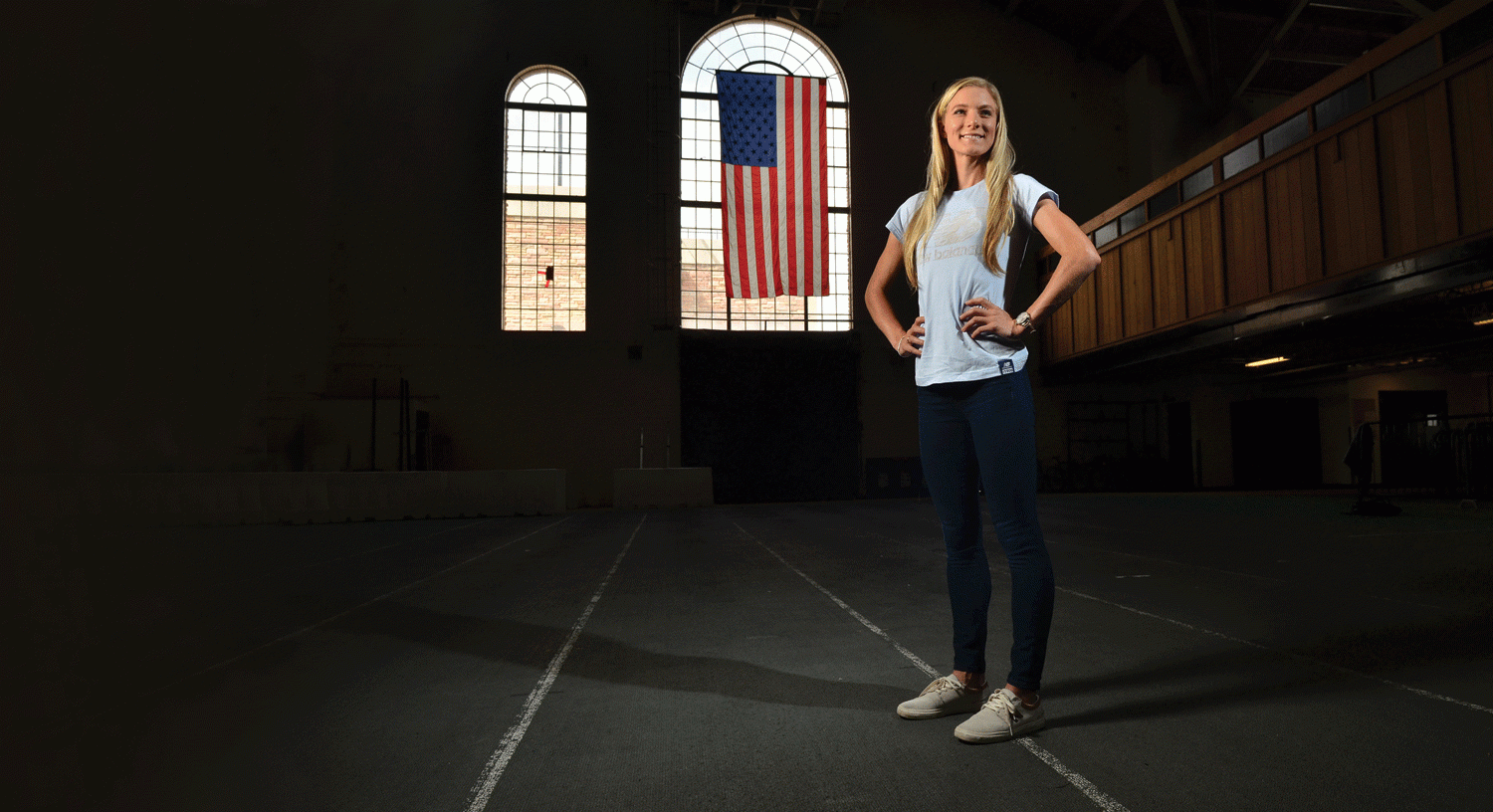
Sports QA: Olympian Emma Coburn

The Olympian
Emma Coburn (Mktg’13) is just like you: She dreads the treadmill and enjoys a summer afternoon on the patio with friends. But this former Buff, who traces her love of CU to her grandfather, William E. Coburn (CivEngr’49), also ran in the 2012 Olympics in London. In July, she’ll race the 3,000-meter steeplechase at the U.S. Olympic Trials with her sights set on an appearance in Rio. Here's our interview, condensed and edited for print, and a longer version for the web.
Did you enjoy the steeplechase the first time you ran it?
Running is so hard. Anyone who runs can attest to that. It’s often not a very fun sport. The steeplechase was the first time that I thought track was fun. It was exciting. I felt comfortable doing it. I was never scared or intimidated.
What’s the best part?
I think it’s the water jump. That’s where a lot of the action happens, good or bad. It’s where a lot of races are won or lost.
So what is the hardest part?
That it’s so physically taxing and you still have to jump over things, even when you’re at your limit. In other events you can get to your limit and kind of zone out. In the steeplechase, you always have to be engaged, and the pain in the steeplechase comes at you kind of exponentially. It skyrockets. Other events that I’ve run in, whether it’s the mile or even cross-country, it’s a gradual pain train.
You run 75-85 miles a week. Do you ever find yourself on a treadmill dreading a long run?
Most people know [treadmills] were designed as torture devices, that actually is their history. So they are torture sometimes. But when it’s really snowy, if I’m up in Crested Butte for the holidays, I have to [use one]. There’s literally not one patch of dry, there’s no creek path that’s plowed. luckily if you’re streaming a good show on Netflix or listening to a good podcast, it can make it go by. Last winter [2014-15], I discovered “Serial” and I was like, ‘I don’t even care, I’ll run on here for hours.’
What was the best part of your London Olympic experience?
The first was walking in the Opening Ceremonies with Shalaya Kipp (IntPhys, Psych’14), who was also a student at the time. It was the first time Shalaya and I got to look around and realize, ‘Wow, this isn’t just another race, this isn’t just another meet.’ Also, being in the final and looking down the starting line and being like, ‘Wow, I made it to this level and I’m racing in the finals of the Olympics,’ and that was kind of a moment. [I realized] ‘I belong here, I’m not just a fan. These are my peers.’
How did London prepare you for Rio?
It gave me good insight into what the competition looks like in Olympic years. Everyone is ready and everyone comes to win.
Are you thinking podium or gold at the Olympics, or can you even think that way?
It’s hard because the Olympic Trials are so competitive. It’s hard to look beyond that. I think definitely top five is still a goal, and eventually in my career I want a global medal. I’m so focused on just making the team and seeing how my season shapes up that it’s hard to really commit to a goal other than continuing to be in the top five. Anything beyond that would be a really great day.
Is there something that people might not know about you, that they should?
What you see is what you get. But I think what’s so valuable to my core is my friends and family and where I grew up. My childhood in Crested Butte and being a Colorado person has been so crucial in my athletic development and my happiness.
Condensed and edited by Jennifer Osieczanek.
Photo by Casey A. Cass

